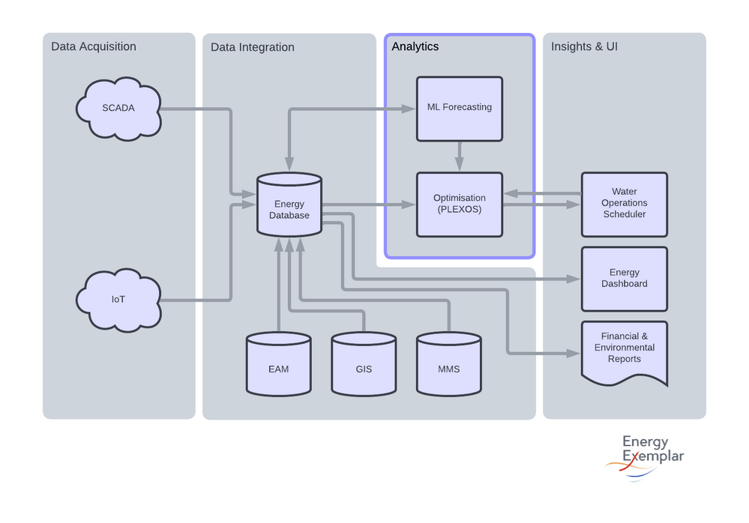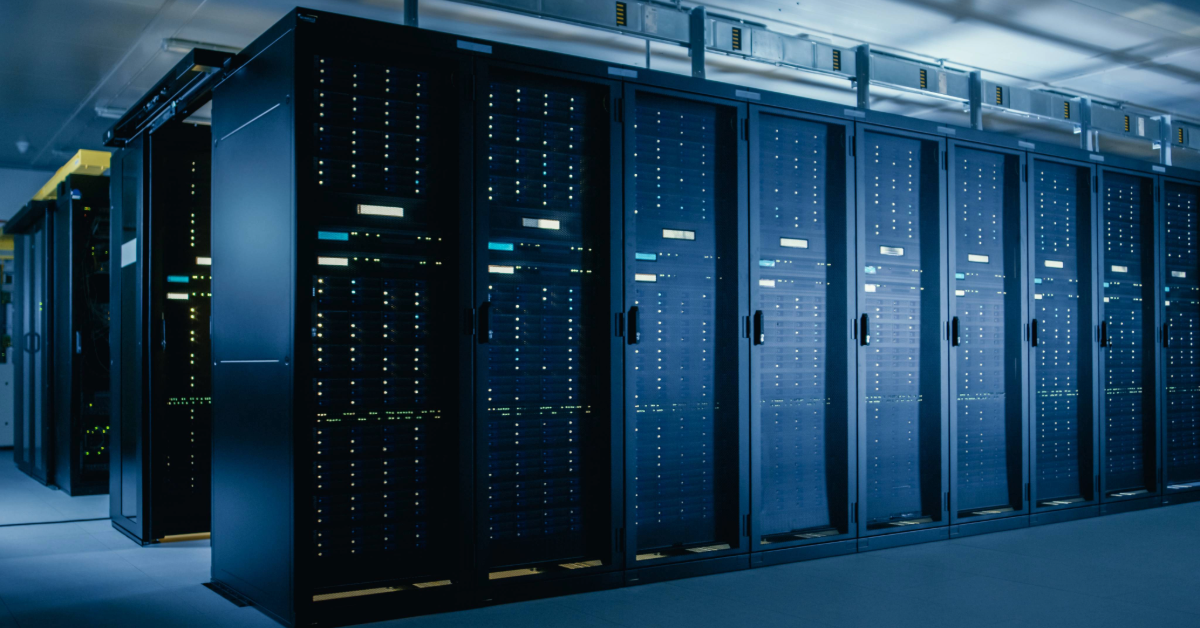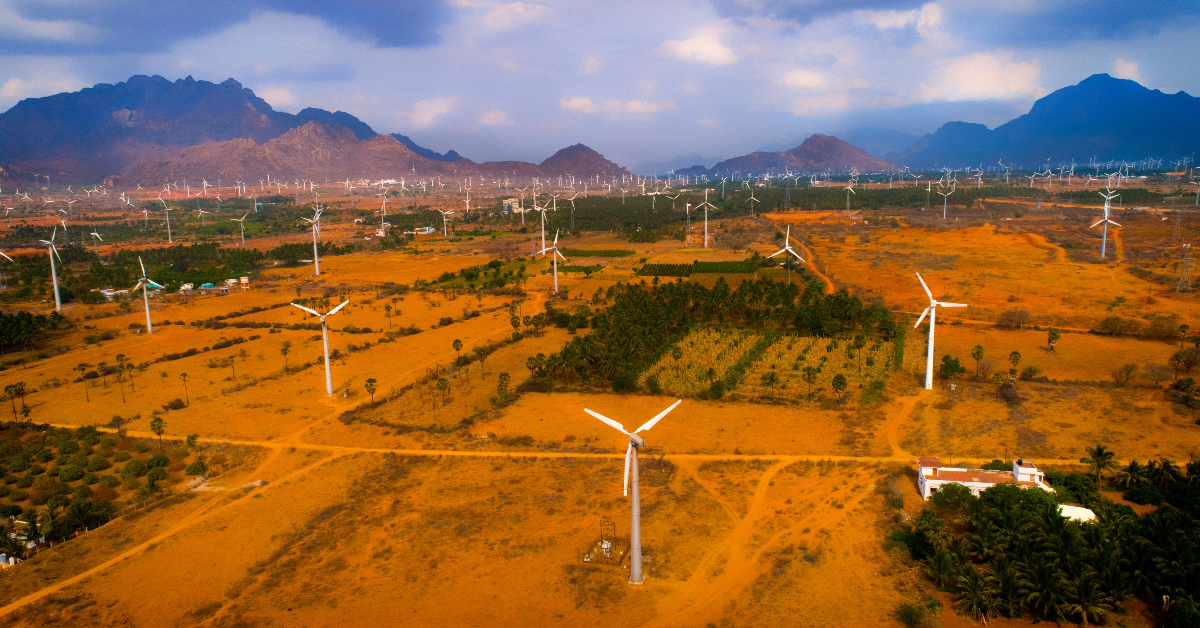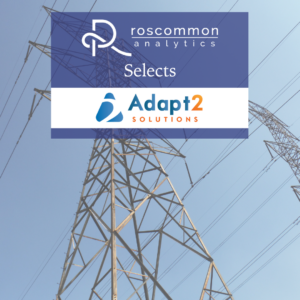Cloud Technologies Critical to Energy Utilities and Organizations
This blog is the first part in a series on cloud solutions and cloud security concerns - subscribe to our newsletter to be sure not to miss the rest...
7 min read
 Robert May
:
February 9, 2023
Robert May
:
February 9, 2023

Industrial and commercial energy users are becoming increasingly aware of the importance of managing their energy usage due to multiple factors, such as the energy transition and increased price of gas and electricity, as well as the introduction of zero-emissions targets to address climate change. The increased importance of energy awareness and effective energy management is driving an evolution in energy management, where energy consumers are installing renewable energy generation systems and energy storage (batteries) behind their energy meter. Consumers are self-generating energy to minimize grid energy usage, and export surplus green energy to the grid to earn revenue, which provides the energy user with multiple levers on both energy consumption and energy generation to better influence their net energy expenditure.
The evolution in energy usage behavior is occurring across the market from retail to industrial. In the retail energy consumer space, smart appliances, batteries, and EV charging are transforming how energy is used at home. At the industrial level, IoT sensors and intelligent control systems are changing the energy usage profile of buildings and the industrial processes to drive energy efficiency, emissions reductions, and energy cost outcomes.
Demand-side energy management not only benefits customers in lowering their energy costs and emissions but for power system operators, it forms the other side of the equation to solve the energy transition, with renewable energy generation and energy storage on the supply side. Power system operators encourage large customers to flex their demand as the grid requires - either curtailing load when energy demand is high and renewable generation is low or increasing demand when energy demand is low and renewable energy is abundant. Both actions assist in keeping the grid stable during these times, and electricity tariffs and other ancillary markets exist to incentivize and reward energy users for doing so.
IoT, data management and analytics platforms enable customers, both large and small, to enhance their energy management and optimize their energy usage from planning, through to real-time operational decision-making.
The application of IoT and analytics to demand management evolves in three levels of maturity:
SA Water is an excellent example of a water utility that has actively embraced a new way of managing its energy usage by combining demand-response and energy generation at scale. SA Water provides water and wastewater services to over 2.7 million customers in South Australia, Australia. It is a major energy consumer since water supply is primarily driven by electrical energy for pumping and treatment processes, and its combined facilities can consume more than 10% of the region’s electricity load.
SA Water’s innovative energy strategy is based on proactive management of energy usage that leverages key features:
Enabling this innovative approach required developing an intelligent energy management system to maximize the benefit of energy generation systems operated in harmony with demand-side management of water supply systems. SA Water has applied an intelligent energy management system to schedule major water supply pipeline systems, which consume significant amounts of energy each year to supply its customers with drinking water.
Determining decisions in real-time that optimally balance conflicting objectives of energy cost reduction, water security and customer service delivery required the implementation of four main components:

The data management layer structures incoming data in a discoverable and accessible database. The database co-mingles data from multiple sources, including market databases, industrial SCADA and PLCs at pumping stations and treatment plants, and diverse IoT data streams from energy meters, weather sensors and telemetry at small-scale solar sites. Additional asset and market data relevant to energy management are referenced from the enterprise asset management (EAM) system and geographical information system (GIS), and market data sourced from the market management system (MMS) database provided to wholesale energy market participants.
The energy analytics component is the beating heart of the energy management system and drives the simulation, and optimization of system operations around energy price, water demand, and intermittent energy generation. The simulation and optimization platform is coupled with an artificial intelligence (AI) demand forecasting platform that uses machine learning models trained on historical data to predict future profiles for price, solar generation, and water demand over a multi-day horizon. The real-time connection between data, forecasting and the simulation model creates a digital twin, which gives system operators the capability to optimize short-term operations on demand, or optimally schedule outages to minimize energy risk.
The scheduling application is a simple UI and optimization orchestration layer. The application allows system operators to review and override key operational inputs, initiate scheduling runs, and review optimized schedules. And a back-end configuration interface allowed modelers to manage optimization model versions and to configure input data mapping from the data layer to the optimization model.
In SA Water’s case, the scheduling system was initially applied to four major water transfer pipelines, which collectively pump up over a gigalitre of source water per day, over distances of more than 60 km, to supply half of the annual water supply volume in South Australia. Each transfer pipeline comprises 2-3 pump stations in stages, with intermediate balancing storage, and terminal storage in open reservoirs that supply the metropolitan water network. The pump stations consume up to 80MW of electricity and represent approximately half of the energy demand in SA Water’s energy portfolio.
An ideal operational schedule needs to co-optimize short-term energy decisions considering multi-day production targets, asset & equipment outages, water storage and water supply constraints and objectives. This is a highly constrained optimization, which needs to be solved efficiently to meet operational decision-making timeframes.
The PLEXOS simulation and optimization platform enabled water system modelers to define a techno-economic model of the water system, which can comprise water treatment plants, transmission pipelines, pumping stations and storages. Behind-the-meter energy generation and battery energy storage systems (BESS) were also modelled, as well as the financial components of energy and reserve markets. This allowed the complete specification of a model for each operational facility, according to its unique water system topology, as well as the combination of power generation behind-the-meter, which provided a solution that is extensible to different water systems.
The optimization platform supported integration with the scheduling application through an API for remote execution of models on-premise or scalable computing on cloud infrastructure. The scalability and flexibility of the platform ensured that the performance requirements for real-time decision-making could be met for a range of model complexity.
The energy management approach also extends to the operation of wastewater treatment facilities, which produce methane-rich biogas. The utilization of biogas to supply power and heat to the wastewater plant is a long-held practice in the water industry.
The ability to export surplus energy to the wholesale electricity market, plus the additional solar PV and battery energy storage system (BESS) behind-the-meter, makes these systems' operation more complex. A real-time optimization was needed to optimize the energy generation from multiple sources while satisfying multiple process constraints in the wastewater treatment process.
Using the same approach as applied for water pumping operations, a model was developed that co-optimizes the dispatch of the gas engines around the solar PV, BESS and operational load to minimize the net electricity cost, and minimizing the amount of surplus biogas flared, while ensuring sufficient process heat is delivered to the process and connection point export limits are satisfied.
Applying a single energy management platform to these two distinct operational systems highlights the flexibility of the approach. The key is the flexibility of the simulation and optimization engine to universally model any industrial process system, creating the potential for many businesses to apply this approach to diverse operational facilities across different sectors.
In addition to real-time analysis and decision-making, the energy analytics platform provides a tool for energy portfolio management requirements, including:
This modeling helps to plan investment in equipment and tune real-time operations, as well as monitor the performance of the energy strategy as part of a complete business energy management solution.
Demand management is increasingly important for energy consumers and is also becoming more complex at the same time. Energy managers require an integrated digital solution that combines IoT data acquisition, data management and energy analytics to determine operations that holistically balance operational requirements and energy performance. The approach to demand management can be tailored to the capability and maturity of an organization, from energy monitoring to energy portfolio management.
SA Water’s example shows how intelligent energy management can be practically applied for complex operational systems that are coupled with distributed energy resources. This example has a broad range and application to other energy-intensive industrial and commercial sectors, including mining, oil & gas, manufacturing, or datacenter operations, which will increasingly seek to better manage their energy consumption and compliment their usage with self-generation to maximum effect.
Energy Exemplar is committed to working closely with industrial energy consumers to enable the evolution of their energy management approach by applying a flexible, high-performance energy analytics platform. PLEXOS and PLEXOS Cloud are eliminating the technological barrier to implementation of demand management and advanced energy portfolio management, which will assist large electricity consumers in managing energy costs and assisting with the overall energy transition.
May, R., 2021, Maximising the benefit of renewables with an intelligent management system, https://wattclarity.com.au/articles/2021/01/maximising-the-benefit-of-renewables-with-an-intelligent...
Anderson, H., May, R. and Duncker, A., 2023, Optimising a Zero Cost Energy Future for the Water industry, in proceedings of OzWater AWA National Conference, May 2023
This article was originally posted at: https://techcommunity.microsoft.com/t5/internet-of-things-blog/real-time-demand-side-energy-management-enabled-through-iot-and/ba-p/3731637

This blog is the first part in a series on cloud solutions and cloud security concerns - subscribe to our newsletter to be sure not to miss the rest...

Over the next two decades, India is expected to see the largest increase in energy demand of any country. To meet this growing demand, the government...

Roscommon Analytics selects Adapt2 Solutions for multi-market operations with emphasis on FTRs and Virtuals.